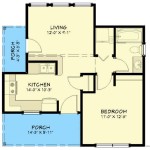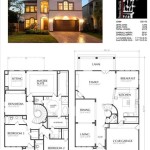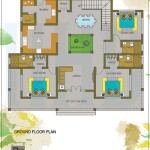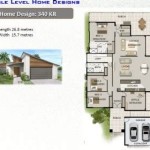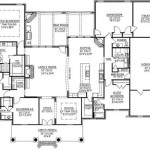Graph Paper Template for Room Planning: A Free Resource
Planning the layout of a room, whether it's a living room, bedroom, kitchen, or office space, requires careful consideration of dimensions, furniture placement, and overall flow. A critical tool in this process is graph paper, providing a visually structured grid that allows for accurate scaling and representation of the intended design. While professionally designed software offers advanced features, free graph paper templates remain a valuable and accessible option for homeowners, renters, and interior design enthusiasts alike. These templates offer a cost-effective way to experiment with different layouts, visualize spatial relationships, and ultimately optimize the use of available space.
The accessibility of free graph paper templates online makes them a practical solution for initial room planning. These templates are readily downloadable and printable, allowing users to immediately begin sketching and experimenting with various configurations. The simplicity of graph paper also eliminates the learning curve associated with complex design software, enabling users with varying levels of technical expertise to participate in the design process. They can be tailored to specific needs, such as different scale ratios or grid sizes, enhancing their versatility. This article explores the benefits of using free graph paper templates for room planning, discusses how to effectively utilize them, and highlights the key considerations for achieving accurate and aesthetically pleasing results.
Benefits of Using Graph Paper Templates for Room Planning
Graph paper templates offer several distinct advantages over other methods of room planning, making them a useful tool for both novice and experienced designers. Their visual nature, accessibility, and adaptability contribute to a streamlined and effective planning process.
First and foremost, graph paper creates a visual representation of the room's dimensions and the furniture pieces intended to occupy the space. Each square on the graph paper corresponds to a specific unit of measurement, allowing users to translate real-world dimensions into a scaled-down drawing. This visual representation facilitates the understanding of spatial relationships and the evaluation of different layout options. The ability to see the entire room layout on a single sheet of paper provides a holistic perspective, making it easier to identify potential problem areas and optimize the flow of movement within the space.
Secondly, graph paper templates are readily accessible and free to use. Numerous websites offer downloadable templates in various grid sizes and scales. This removes the barrier to entry associated with expensive design software or professional drafting services. Individuals can easily print multiple copies of the template, allowing for iterative design exploration and experimentation without incurring significant costs. The availability of different grid sizes allows users to select the template that best suits the specific dimensions of their room and the level of detail required for their plan.
Thirdly, graph paper offers a high degree of flexibility and adaptability. Users can easily customize the template to reflect their specific needs and preferences. For example, they can choose a scale that accurately represents the dimensions of their room, such as 1 square = 1 foot or 1 square = 6 inches. They can also use different colors or line weights to differentiate between walls, furniture, and other elements. Furthermore, graph paper can be used in conjunction with other design tools, such as rulers, protractors, and furniture templates, to enhance the accuracy and precision of the plan.
How to Effectively Utilize Graph Paper for Room Planning
The effectiveness of graph paper as a room planning tool depends on the user's ability to accurately measure the room, choose the appropriate scale, and represent furniture dimensions proportionally. Following a systematic approach ensures that the final plan is both accurate and useful.
The first step is to accurately measure the dimensions of the room. This includes the length and width of each wall, the height of the ceiling, and the location of windows, doors, and other architectural features. It is recommended to use a laser measuring tool for greater accuracy, especially for larger rooms. All measurements should be recorded in a consistent unit of measurement, such as inches or feet. Once the room dimensions have been obtained, a scale must be chosen that allows the entire room to be represented on the graph paper. A common scale is 1 square = 1 foot, but this may need to be adjusted depending on the size of the room and the size of the graph paper.
Next, the outline of the room should be drawn on the graph paper, using the chosen scale. It is important to accurately represent the location of windows, doors, and other architectural features, as these will influence the placement of furniture. Consider the swing of doors and the impact on usable wall space. Mark the location of electrical outlets and light switches, as these are crucial for planning the placement of lamps and other electrical appliances. Once the room outline has been drawn, the dimensions of the furniture pieces that will occupy the space should be measured. This includes the length, width, and height of each piece. These furniture dimensions should then be converted to the chosen scale and drawn on the graph paper, using different colors or line weights to distinguish them from the room outline.
Finally, experiment with different furniture arrangements on the graph paper. Cut out scaled representations of furniture pieces and move them around the floor plan to visualize different layouts. Consider the flow of movement within the room and ensure that there is adequate space for walking and maneuvering. Pay attention to focal points, such as windows or fireplaces, and arrange furniture to take advantage of these features. Experiment with different groupings of furniture to create conversation areas or work spaces. This iterative process allows for the exploration of multiple design options before committing to a final layout.
Key Considerations for Accurate and Pleasing Room Plans
While graph paper provides a valuable framework for room planning, certain key considerations must be addressed to ensure the accuracy and aesthetic appeal of the final plan. Attention to detail and a holistic understanding of design principles are essential for achieving optimal results.
Maintaining proportionality is crucial for creating a realistic and visually appealing room plan. Furniture pieces should be drawn to scale on the graph paper, accurately reflecting their relative sizes and shapes. Avoid distorting furniture dimensions to fit into a particular space, as this can lead to inaccurate representations and unrealistic expectations. Use templates or stencils to draw accurate representations of common furniture shapes, such as sofas, chairs, and tables. When using templates, ensure that they are scaled appropriately to match the chosen scale of the graph paper.
Consider the functionality of the room and the intended use of each space. Design the layout to support the activities that will take place in the room, such as relaxing, working, entertaining, or sleeping. Arrange furniture to facilitate these activities and create a comfortable and functional environment. For example, in a living room, arrange seating to encourage conversation and create a comfortable viewing area for the television. In a bedroom, place the bed in a location that maximizes privacy and minimizes disturbance from external noise or light.
Finally, pay attention to the aesthetic aspects of the room plan. Consider the balance and symmetry of the layout, as well as the overall visual appeal. Arrange furniture to create a sense of harmony and balance within the space. Use color and texture to add visual interest and create a welcoming atmosphere. Consider the placement of artwork and other decorative elements to enhance the aesthetic appeal of the room. Experiment with different layouts to find the one that best reflects personal style and preferences.
By carefully considering these key points, users can effectively leverage free graph paper templates to create accurate, functional, and aesthetically pleasing room plans. The simplicity and accessibility of graph paper make it a valuable tool for anyone embarking on a room design project.

Free Resource Business Templates Room Layout Planner Graphing Graph Paper

Free Graph Paper Template Printable And Grid

Printable Graph Paper Free Com

Printable Graph Paper Free Com

How To Draw A Simple Room Layout Organized Ish

Free Graph Paper Template Printable And Grid

Graph Paper Vectors Ilrations For Free Freepik

Precise 1 Inch Graph Paper Templates Free Printable The Simple Homeschooler

Large Graph Paper Template 10 Free Documents

Large Graph Paper Template 10 Free Documents


